ARCHITECTURAL SITES
THE OLD GYUMRI

Walking through the streets of the old Gyumri, one can imagine the standard of life of the 19th century “Gyumrezzi” who, while building the new city during the Russian Empire, contributed to transforming the traditional Armenian architectural model into a completely new kind of style in Armenia. The old Gyumri was divided into several quarters or “Mailah” between this Frank or Catholic quarter, Urumneri or Greek quarter, Boshi or Merchant quarter, Geghtsonts or Peasant quarter, Slabodka or Russian quarter and Turkish Mailah. The rich and the poor lived side by side, each building is so substantial and elegant. The difference between wealth was in quantity, not in quality. Even the humblest home boasts of style and attention to detail. The ironic mood of the “Gyumrezzi” is a kind of characteristic …
MEGHRI
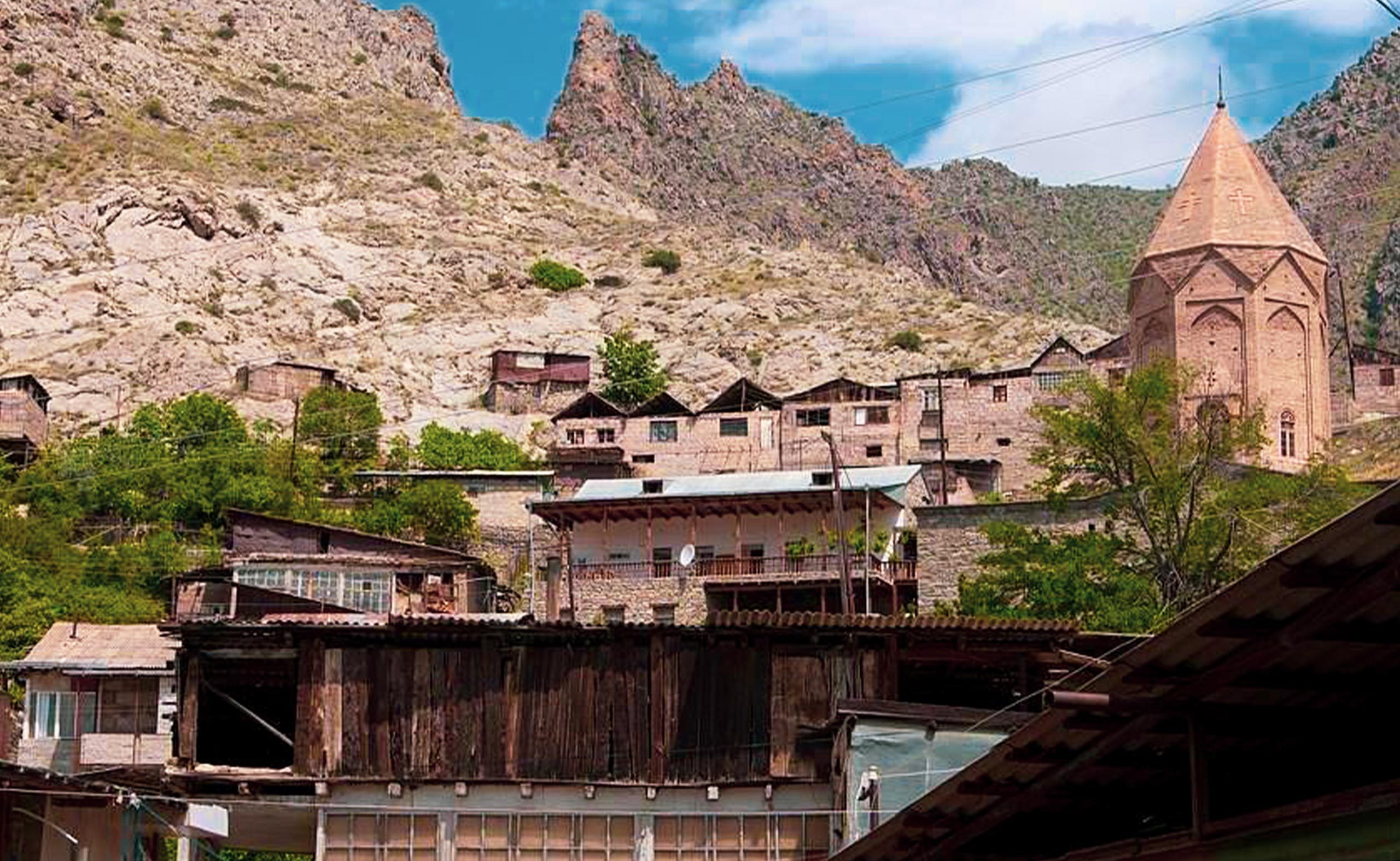
Meghri is a town near the border of Iran. Pokr Tagh is the most attractive district of the town with its oldest extant structures, a virtual folk museum of architecture and old traditions. Pokr Tagh is a warren of alleys and narrow streets that trace the age-old paths of inhabitants who shaped this region for hundreds of years. Its feature is the basilica of St. Sarkis church, with its 17th century frescoed walls that are among the most exquisite in Armenia, boasting an Oriental style that is still unmistakably Armenian.
TSAGHKADZOR
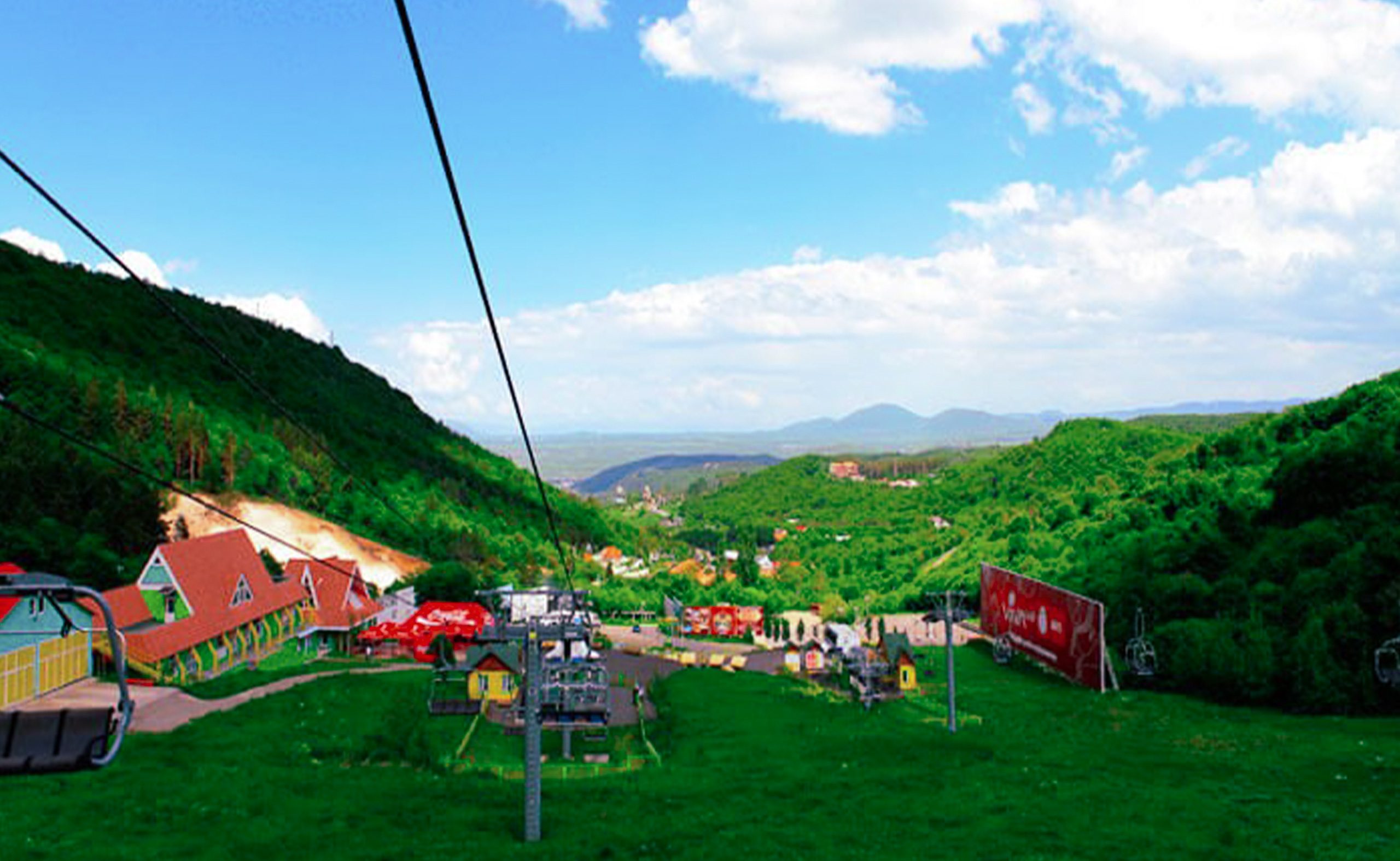
Tsaghkadzor (Valley of Flowers) is a pleasant and green resort located in 50 km north from Yerevan, on the side of the Teghenis mountain range. During Soviet times in Tsaghkadzor Soviet athletes were trained in order to participate in the Winter Olympics. Here, in winter you can ski and practise other winter sports. The 6 km long Mount Tsaghkuniants cable car runs its full capacity every day during the ski season. In the summer you can enjoy beautiful hiking and horse riding in the surroundings of Tsaghkadzor.
NORAVANK
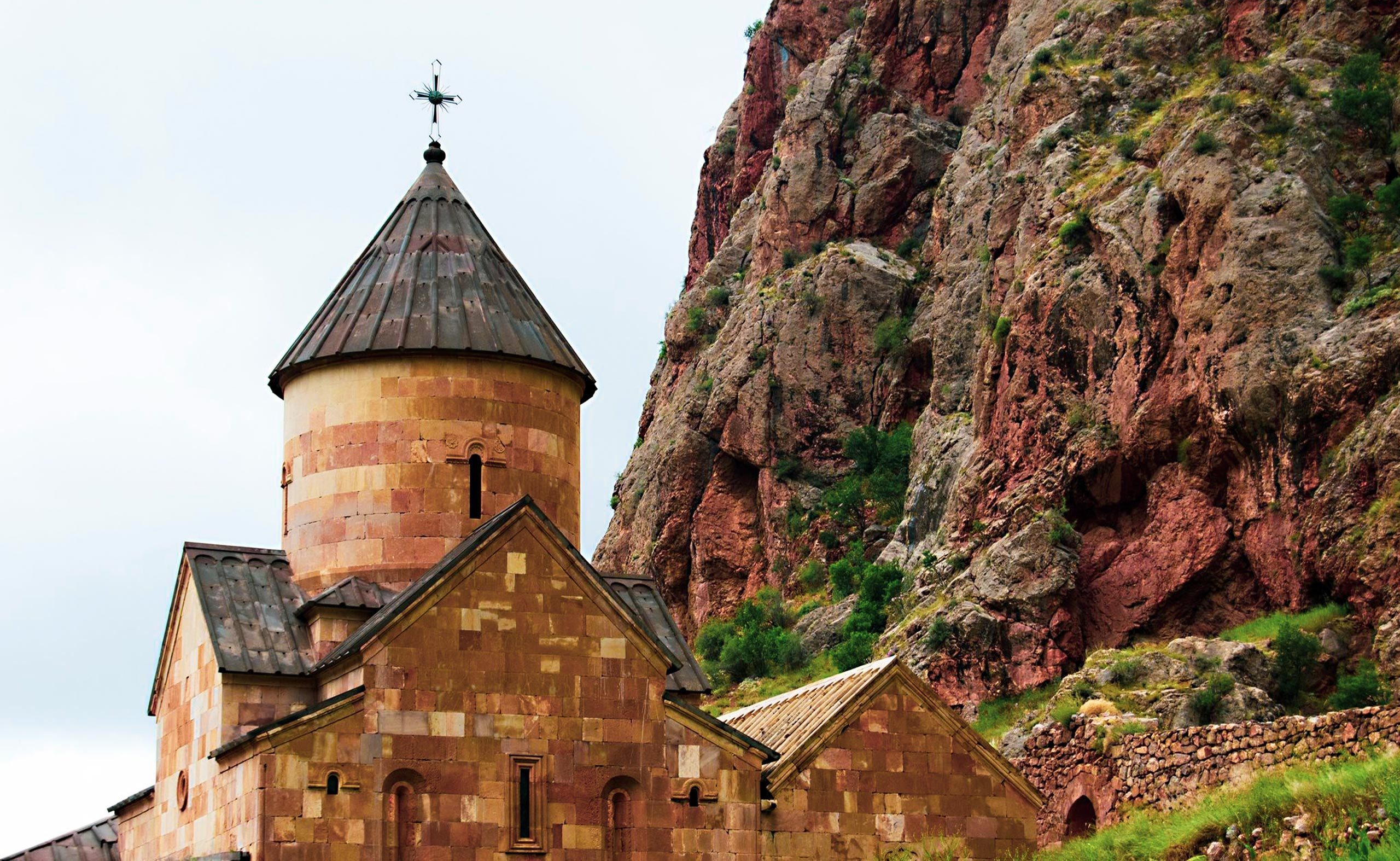
Noravank (which means New Monastery) is a 13th century complex located in a narrow gorge in the upper Amagu valley, near the town of Yeghegnadzor. The gorge is known for its high and protruding limestone rocks of red brick and gray, which make the way to the monastery a breathtaking scenery. Vestiges of various civil and khatchkar buildings are scattered inside and outside the monastery walls. A rare thing in Armenian churches, Saint Astvatsatsin is in two floors and access to the second floor is via a narrow, symmetrical row of stairs that runs along the façade of the building. The church, completed in 1339, is the masterpiece of the great sculptor and miniaturist Momik. Many of his finest works are shown at Noravank as masterpieces of the most talented khatchkar engraver in Armenian history.
KHOR VIRAP
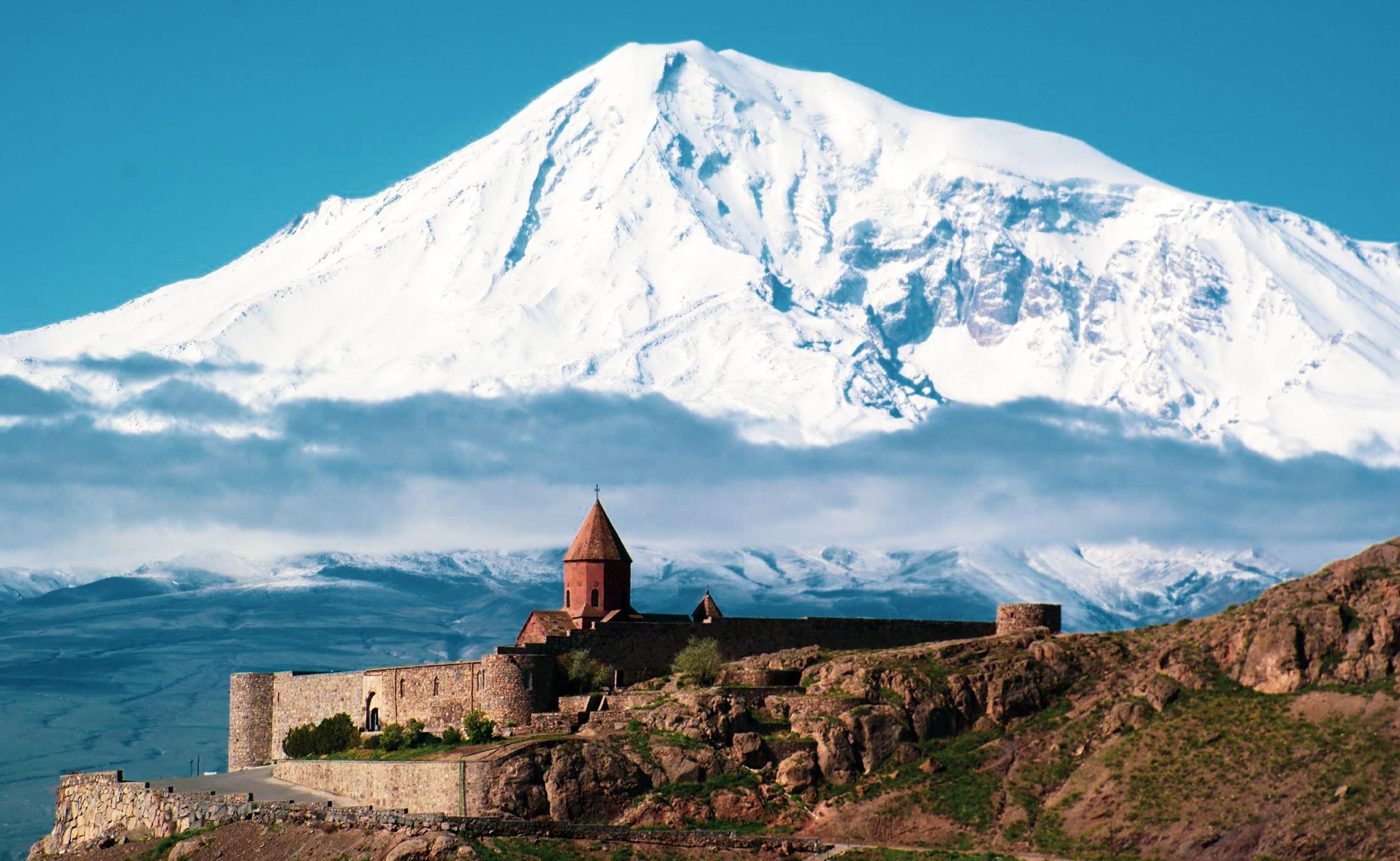
No place is more closely intertwined with the history of the Armenian Christianity of Khor Virap, nestled in the Ararat valley with the splendid backdrop of the biblical Mount Ararat. In the late 3rd century, while Christianity was beginning to spread in Armenia, King Tiridates III mercilessly persecuted Christians. St. Gregory the Illuminator, a devoted evangelist, was condemned to die in a deep pit at the site of Khor Virap (which actually means “deep dungeon” in Armenian). But St. Gregory miraculously survived there after 13 years, after which he was freed to cure King Tiridates from his madness. In awe and reverence, the king converted to Christianity and in 301 AD, he declared it the official religion of Armenia, making Armenians the first nation to officially adopt Christianity (79 years before the Roman Empire). The pit, where St. Gregory the Illuminator was held prisoner for 13 years, is located in the undescribable Chapel of St. Gevorg, separated from the main church of the Khor Virap complex.
HAGARTSIN AND GOSHAVANK
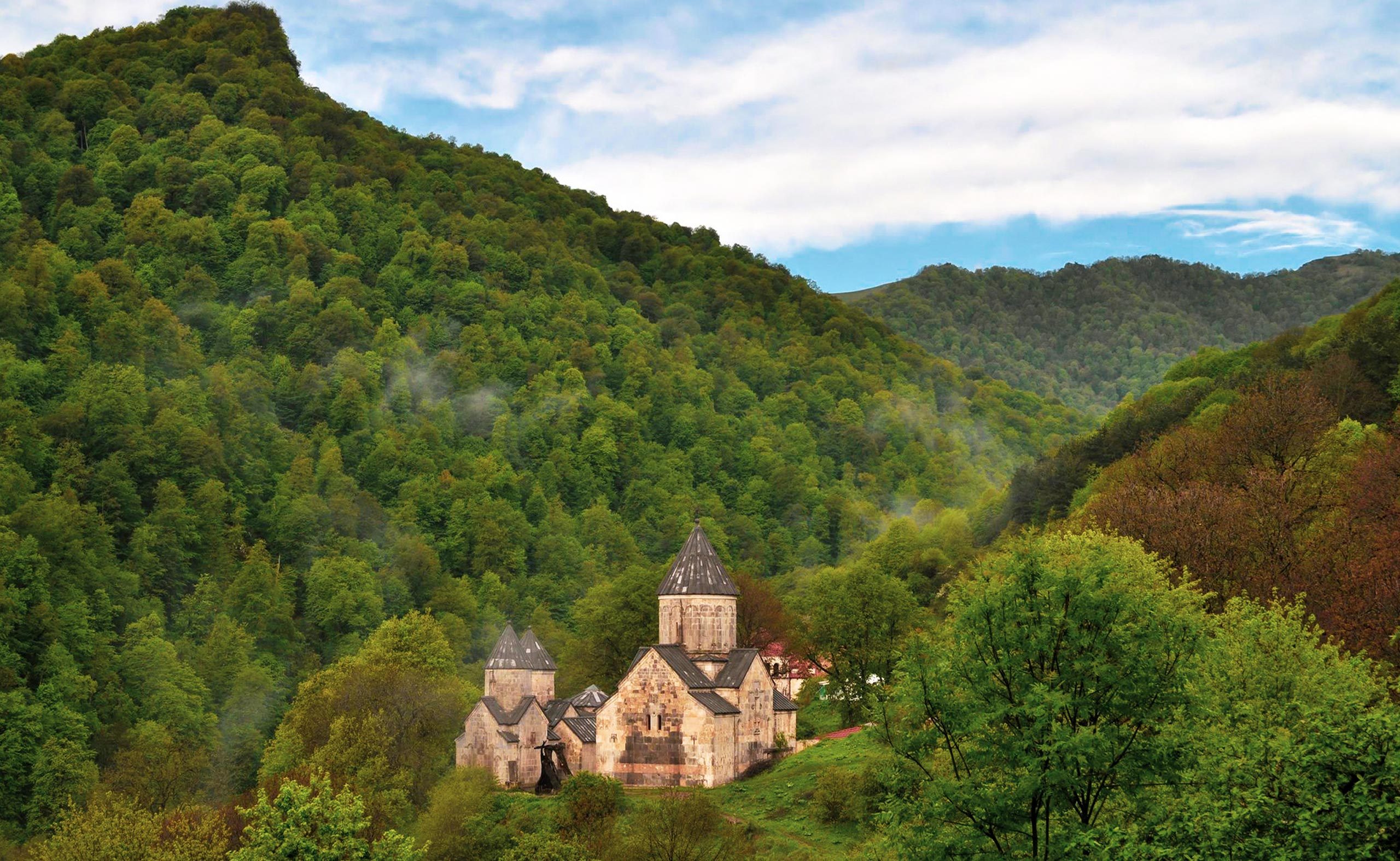
Nestled in a temperate forest on the upper banks of the river Agstev are Haghartsin and Goshavank: the monasteries of the picturesque district of Dilijan. Their combination of natural and architectural beauty creates a truly spiritual setting. The position of these monasteries, between dense oak forests along river gorges, has inspired their original architectural features. Neither Haghartsin nor Goshavank are fortified complexes. Their facilities are surrounded by medieval peasant houses and greenery. The remains of numerous religious and civil buildings show that in the 12th and 13th centuries these monasteries were full of life. Haghartsin and Goshavank are ideally situated for a whole day of hiking and picnicking, with the area protected by the state of Dilijan National Park nearby. Pilgrims often walk from one monastery to another, taking the time to reflect and breathe in.
AGHTSK

The architectural and historical complex of Aghtsk includes a 5th century church reconstructed in the 19th century as well as a 4th century crypt housing the bones of the Arshakuni kings. According to 5th century historian Pavstos Buzand, troops of the Sassanid king Shapuh II destroyed the Arshakuni ancestral burial place at Ani-Kamah and “captured the Arshakuni Kings’ remains, failing only to open the burial vault of King Sanatruk which was an enormous and incredibly strong and ingeniously built structure.” The remains of the other kings were carried to Persia in an effort to dispirit the Armenians and according to legend thereby eclipse their power.
AKHTALA
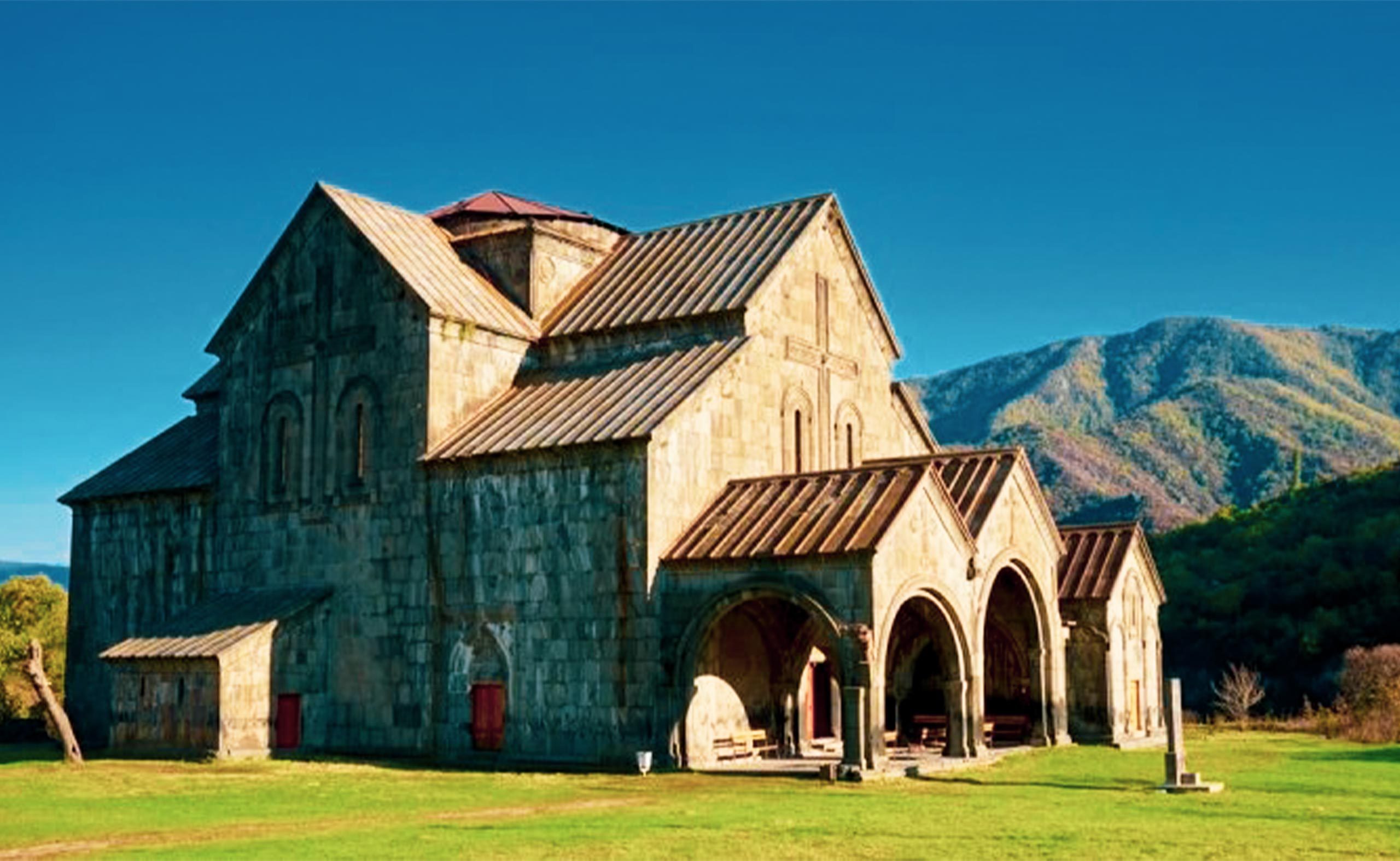
The fortress and monastery of Akhtala was built in the late 10th century. Several monasteries in northern Armenia were converted to Chalcedonian or Greek (Byzantine) Orthodoxy, a prominent example being Akhtala. Akhtala was the religious center for Chalcedonian Armenians as well as an Armenian-Georgian center for learning. From the late 18th century to the present the monastery has served ethnic Greeks who settled in Akhtala to work in the nearby gold and silver mines. Akhtala remains one of Armenia’s best intact examples of its great fresco period. Currently the monastery has its pilgrimage days on September 20–21. Armenians, Greeks and Georgians visit the monastery on this occasion.
ARAKELOTS MONASTERY
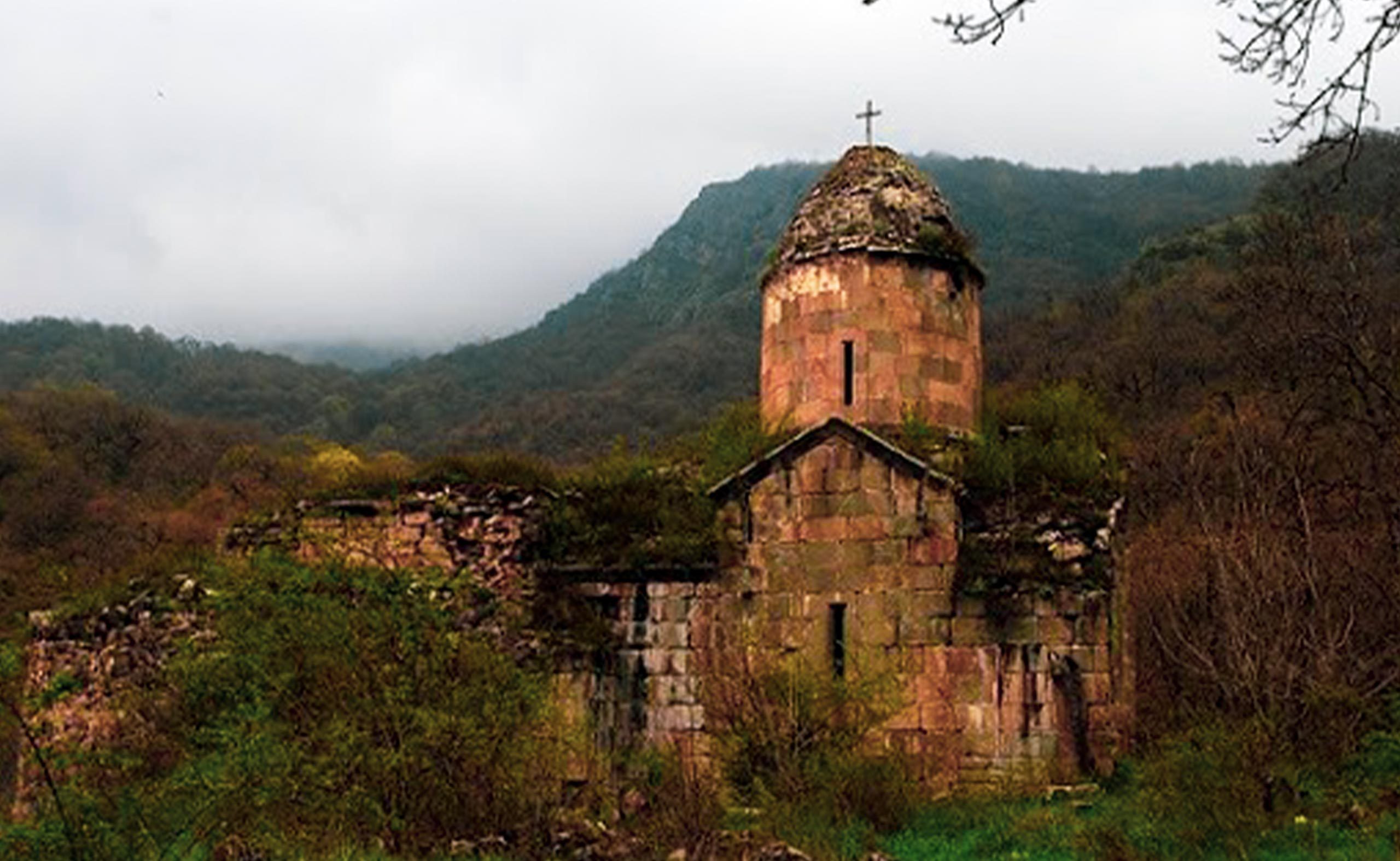
A testament to medieval Armenian architecture, Arakelots (13th-14th cc.) looks over the Left Bank of the Kirants River. Thick defensive walls with round towers surround the complex, which consists of two churches, a gavit, living quarters and auxiliary structures, most in ruins. Around the monastery on both sides of Kirants river, traces of historic Arakelots village can be found with remnants of a bridge (S’ranots Bridge), a caravanserai, baths, numerous churches and other structures.
DEGHDZNUT MONASTERY
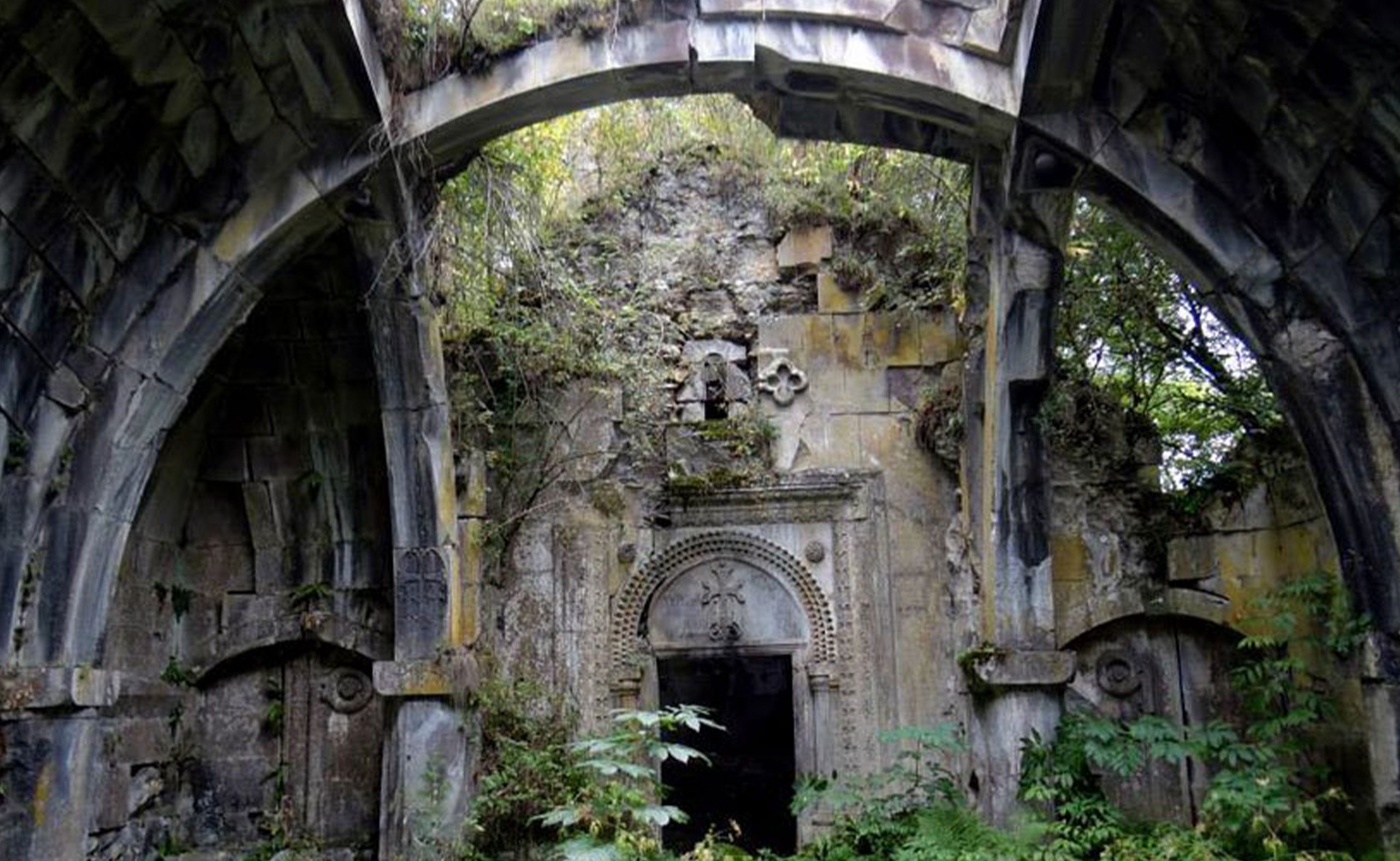
An important example of medieval Armenian architecture, Deghdznut vank (12th – 13th cc.) is set in the deep forest of the Khndzorkut (literally apple seed) River canyon. The monastery complex includes a church, a gavit and a small chapel, surrounded by a cemetery and ruins of the ancient village with the same name (Deghdznut).
ULGIUR

An old medieval settlement. Near the monument there are important khachkars (stone crosses) and other beautifully carved stones. Ulgiur is important as the birth place of the master Momik, an Armenian miniature painter, sculptor, and architect who lived from the late 13th-mid 14th centuries. In 2004 excavations uncovered gravestones for Momik’s parents and members of his brother’s family. Note the two tall stones nearest the chapel; these were Vishap (dragon) Stones from Armenia’s pre-Christian era, converted into Christian monuments by carving simple crosses and other religious symbols on top of the dragon image. Vishap stones were often placed at water sources and are among Armenia’s oldest religious icons.
TANAHAT MONASTERY
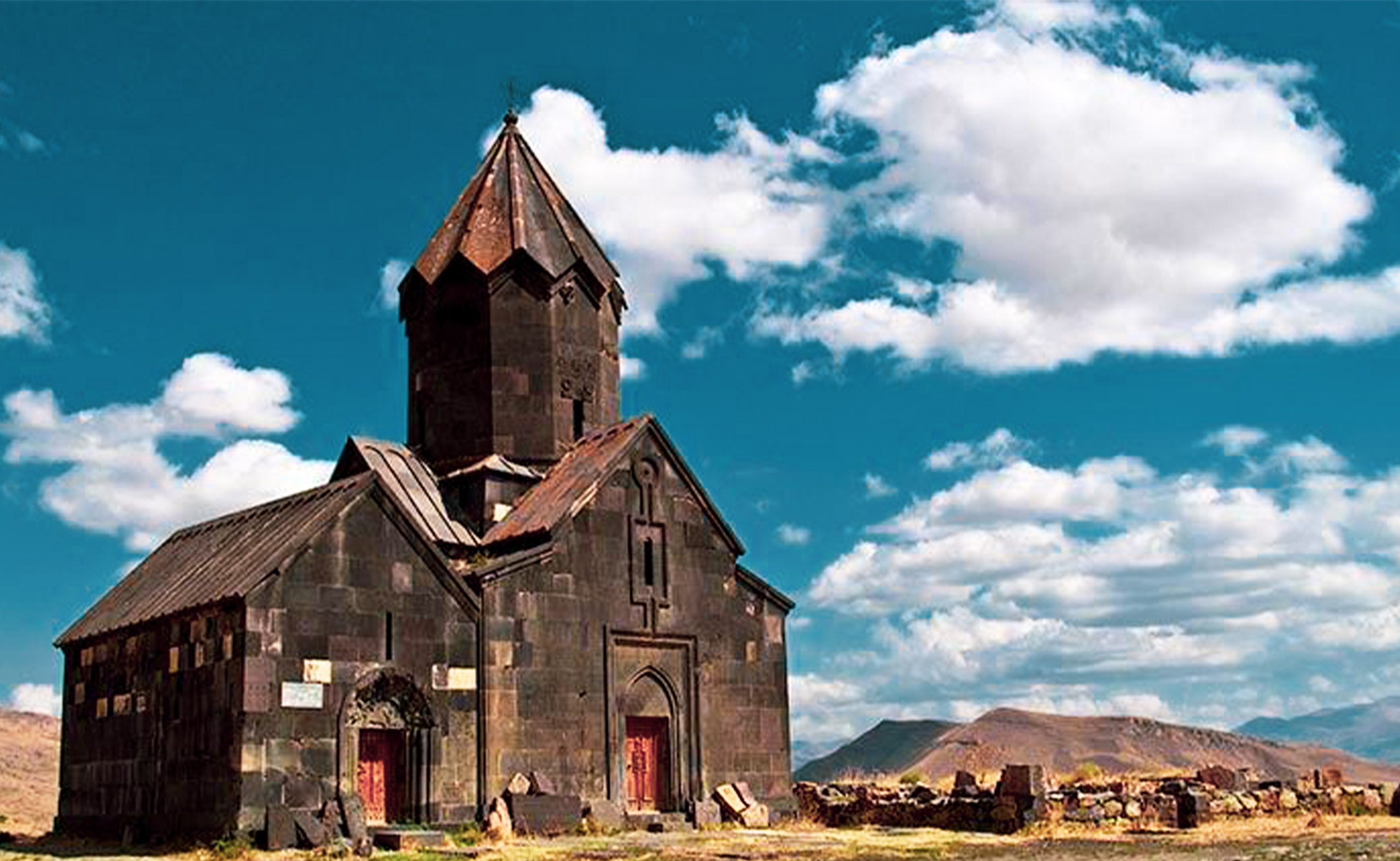
Tanahat (Tanadeh) Monastery was mentioned as early as the 8th century and was one of medieval Armenia’s most important religious and cultural centers. Its main church, Surb Stepanos (St. Stephen), was built between the years 1273 to 1279 under the patronage of the Proshian family. The Proshian emblem, an eagle clutching a lamb in its talons, is carved on the southern wall of the church. The single nave 13th century Surb N’shan (Holy Sign) Church adjoining the monument from the north has a highly expressive bas-relief carving on the lintel over its entry, depicting a remarkable hunt scene. Some scholars believe that the Monastery housed Gladzor University (founded in 1282), the most prominent educational institution of its day in Medieval Armenia, where Natural Sciences, Mathematics, Theology, Geometry, Astronomy, Chronology, Miniature Painting and other subjects were taught.
KIRANTS MONASTERY
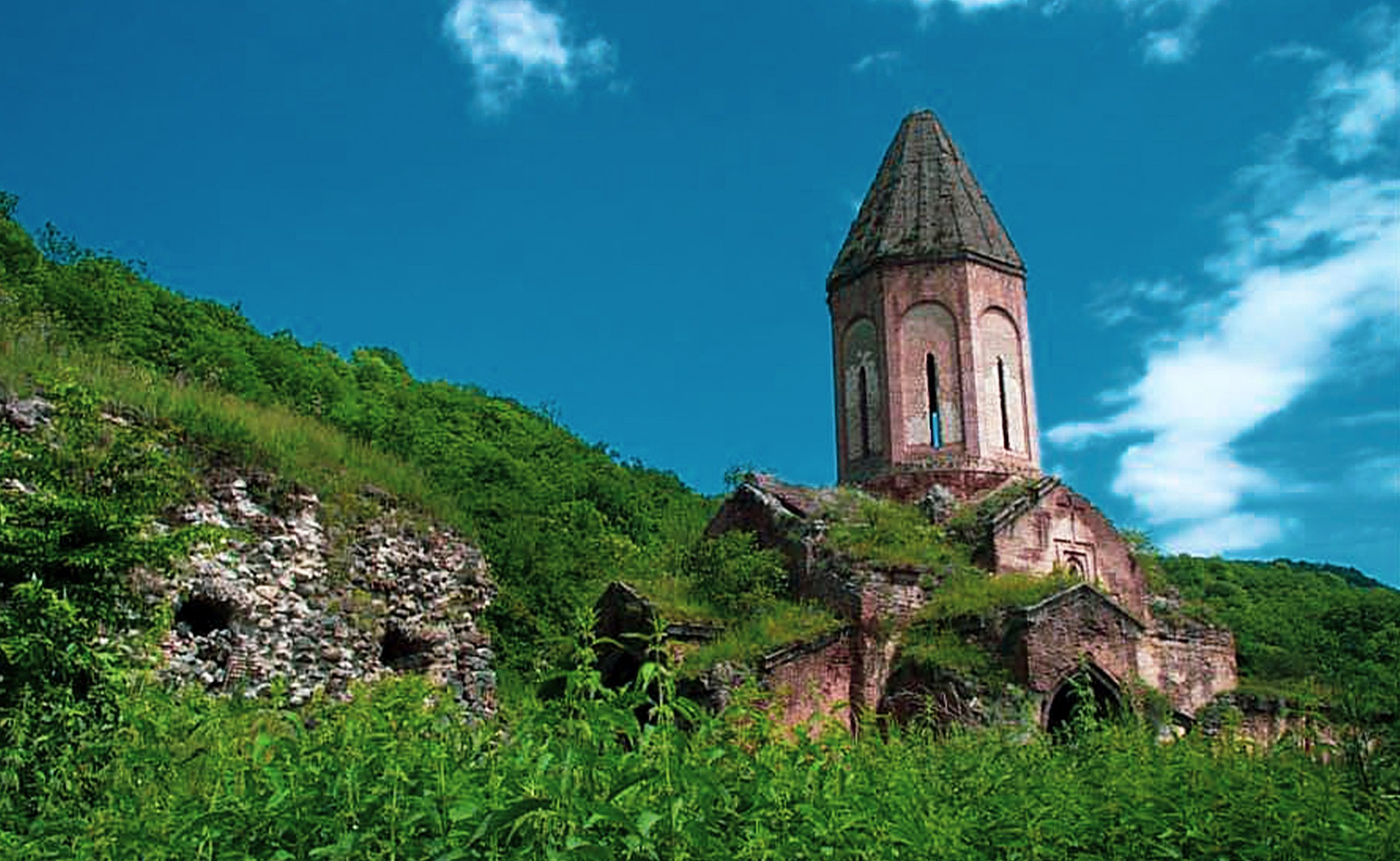
Another important example of medieval Armenian architecture, Kirants Monastery (13th century) is on the Left Bank of the Kirants River, deep inside the forest. The complex consists of three churches, gavit-halls, refectory, dwelling and service structures, defensive walls with a large arched gate. Rarely seen in Armenia, most of the complex is made of brick, with some structures and details made from finely hewn durable sandstone. The dining hall / refectory at Kirants monastery is an important example of vernacular architecture, built using a combination of partially-worked sandstone and river rock. It is a large vaulted hall, the vault resting on three arches. As in the churches, fresco fragments with Georgian and Greek inscriptions are preserved on the walls.
TSAGHATS KAR
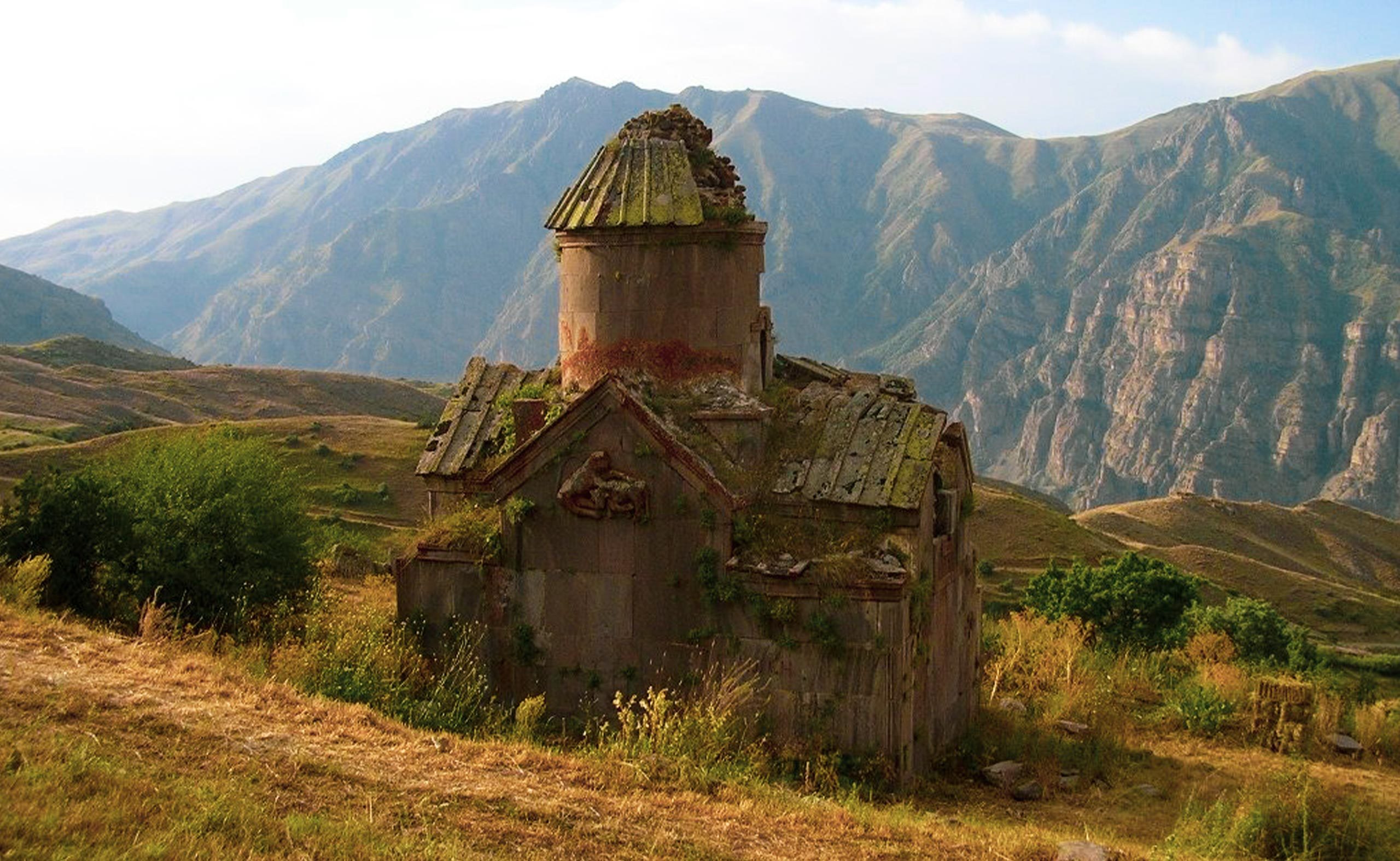
Tsaghats Kar complex is 2 km west of Smbataberd fortress (seen on the mountain ridge opposite the monastery). According to the 13th century historian and Metropolitan for Siuniats Stepanos Orbelian, in the 5th century, during the war against the Sassanids, four battles took place in Vayots Dzor, one of which occurred near Tsaghats Kar. The bas reliefs on the walls of St. Karapet Church are crests for the princes of Siunik (9th-11th cc). The monastery was founded during the reign of King Abbas I Bagratuni (929-953) by an abbot also named Stepanos, vastly enlarging the complex and adding monk quarters and service buildings. Other enlargements came in the 11th century and thereafter, adding rooms, refectory, gavits and other buildings.
SPITAKAVOR
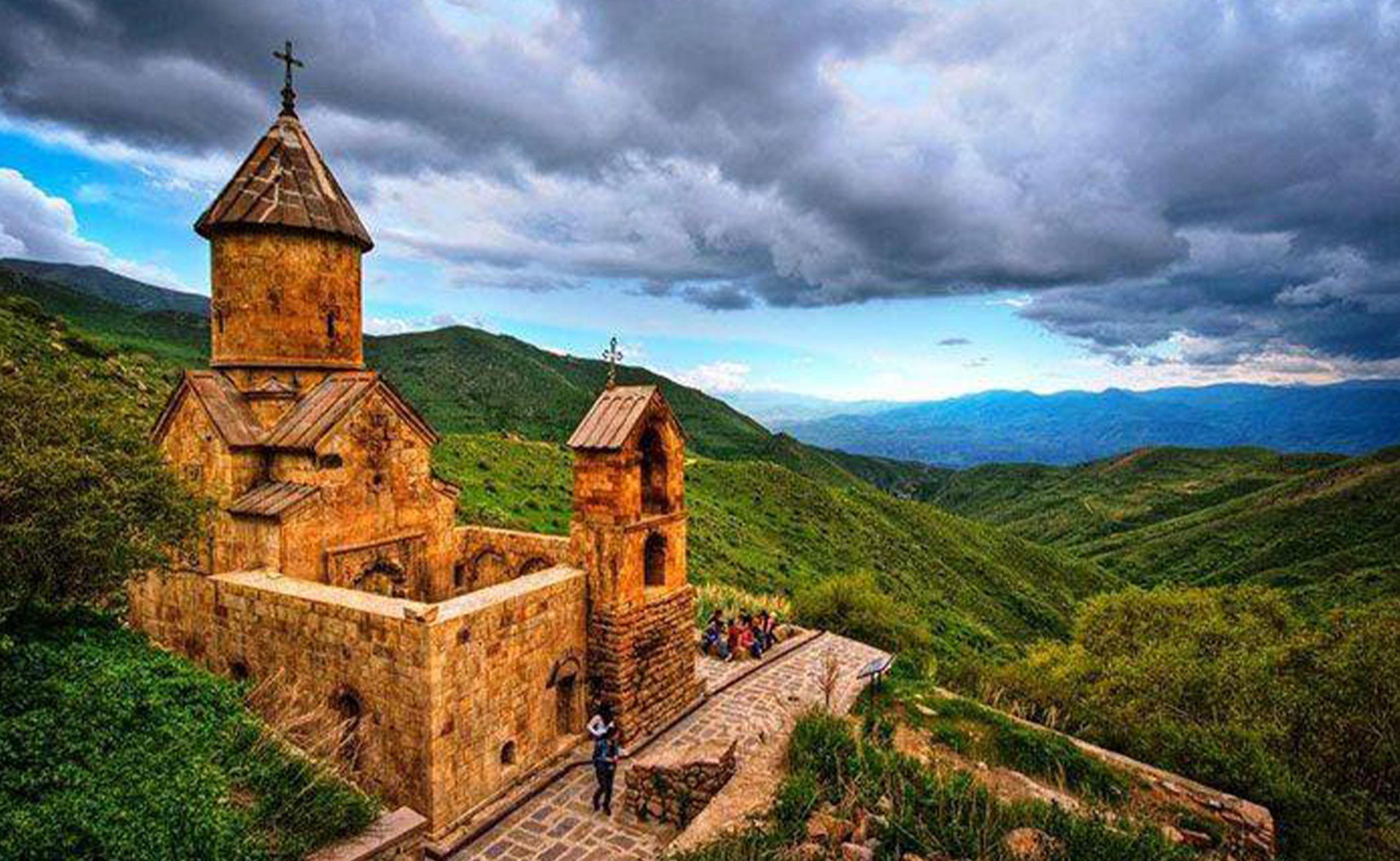
Spitakavor Astvatsatsin’s (“White Virgin”) name comes from its white shaved felsite stone. According to the inscriptions on the walls of the church, it was built for the Proshian prince in the 14th century. Spitakavor was one of the more important cultural, educational and religious centers of Vayots Dzor, continuing into the 15th century despite attacks by Turkmen Kara-Koyunlu and Ak-Koyunlu tribes which devastated the region after the collapse of the Mongol Empire. Among the graves in the church yard is the final resting place for the Armenian Resistance leader Garegin Nzhdeh (1886-1955). Nzhdeh joined partisan forces fighting Turkish control in the Balkan Wars and WWI, where his brigade helped drive Turks from Western Armenia. During WWII, Nzhdeh tried to negotiate a plan to free all of historic Armenia from the Soviets and Turkey. Captured by the Soviets, he died in prison. In the 1987 his remains were secretly moved to Spitakavor.
THE TEMPLE OF GARNI
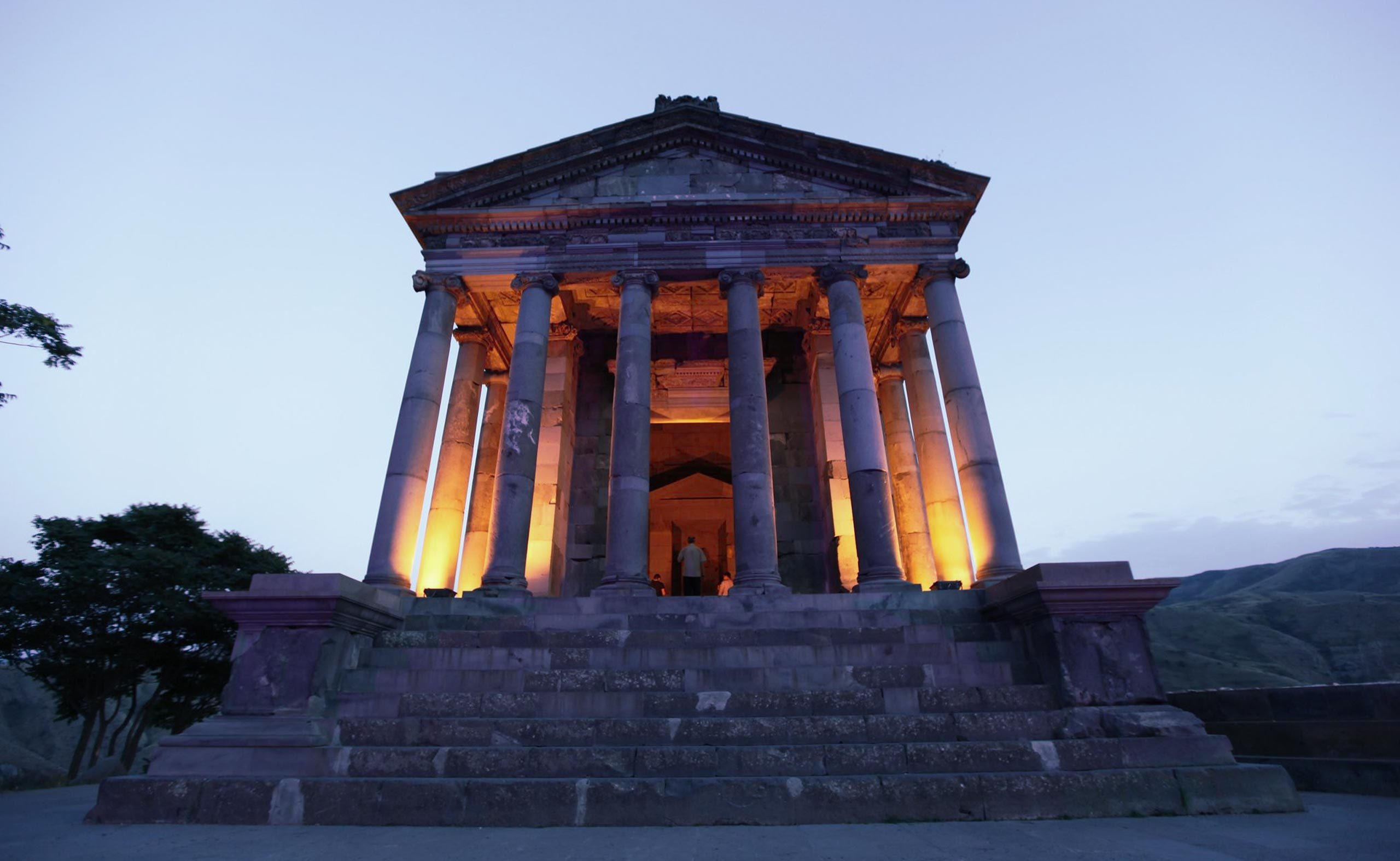
Before the Christian era, the landscape of Armenia was littered with pagan temples and monuments dedicated to the gods. The early Christians destroyed most of the testimonies of the pagan era, when building churches on the foundations of the previous temples. However, scattered throughout Armenia remain some vestiges of this fascinating historical period. The most important of these is the Temple of Garni, 1st century AD, the only pagan temple remained almost intact throughout Armenia. Garni is a jealously guarded monument: it is the only temple left to bear witness to the pagan past of Armenia.
GLADZOR UNIVERSITY HISTORIC-CULTURAL PRESERVE-MUSEUM
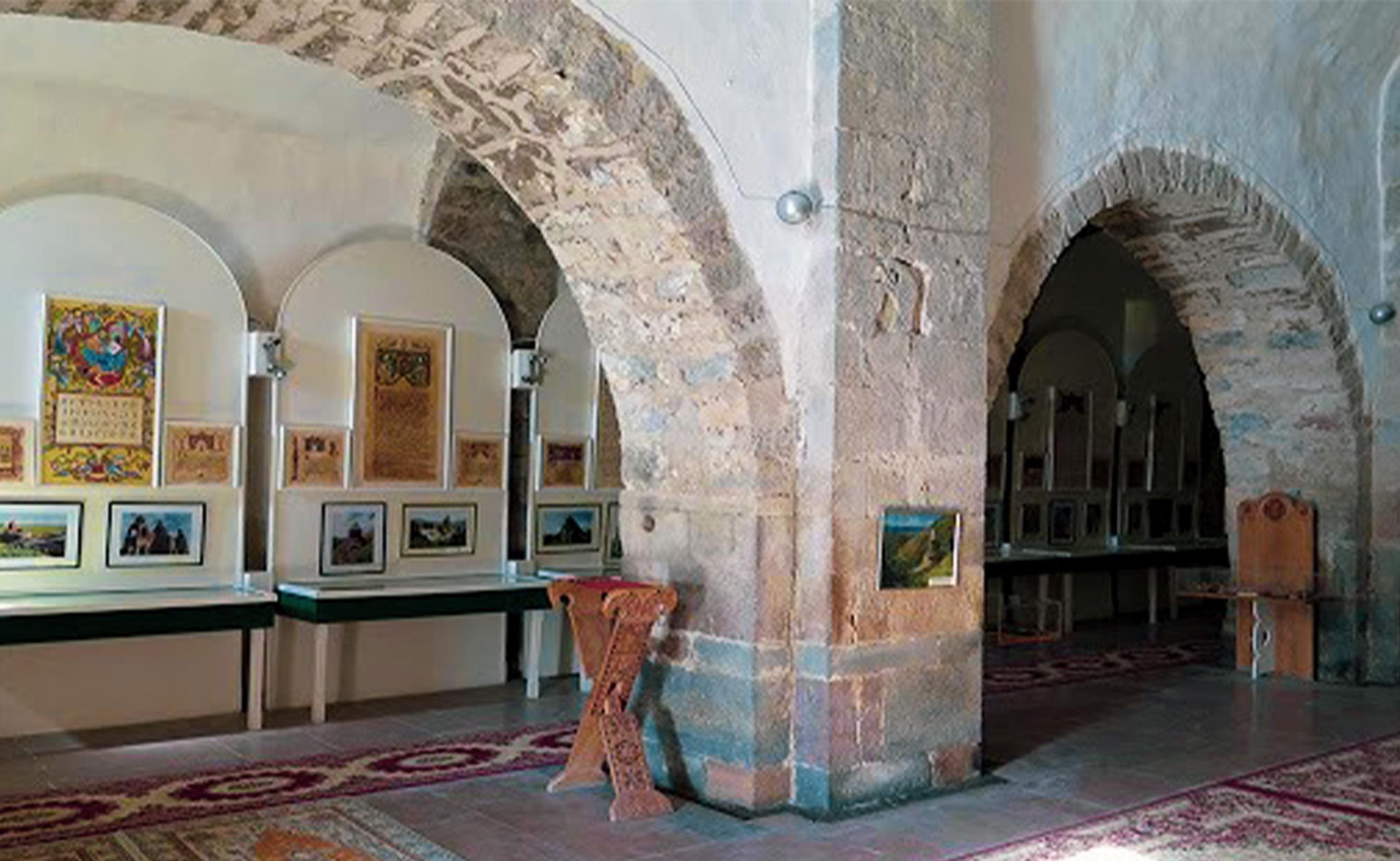
This museum, established in 1984 on the 700th anniversary of Gladzor University, is located in the historic church of Surb Hakob (St. Jacob) in Vernashen village. The exhibition is devoted to higher education, scriptural art, the unprecedented rise of various branches of science in Medieval Armenia, and the history of Gladzor University. At Gladzor, students had a rigorous syllabus, studying Theology, Mythology, Philosophy, Bibliography, Grammar, Rhetoric, Logic, Arithmetic, Astronomy, Chronology and Geometry. Gladzor was a major center of calligraphy where hundreds of manuscripts were created. An important distinction from other schools of learning in medieval Armenia, Gladzor University had its own charter and its own educational and scientific grading system. Of special note, students practiced oral debate and defended graduation thesis at the university.
AMBERD FORTRESS
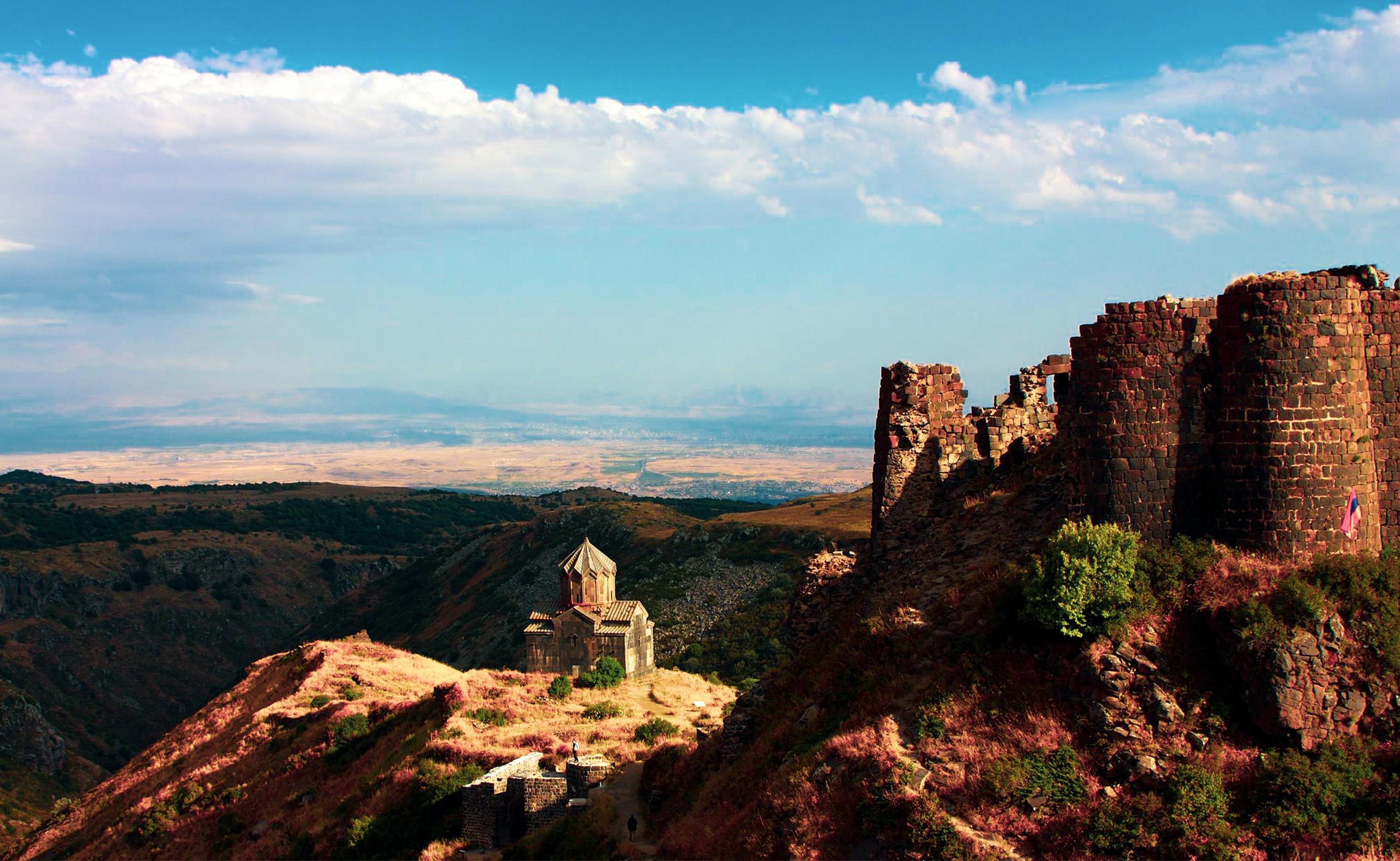
The fortress of Amberd is located on a triangular promontory, flanked on two sides by the Amberd and Arkhashan rivers, while the third was protected by a solid wall. The site was permanently inhabited, and not just in case of attack by the enemy. It belonged to a local dynasty, that of the Pahlavuni. In addition to the main entrance there were also underground passages. The numerous cisterns, which were filled by rain water and snow, ensured water supply to the citadel throughout the year. Inside the fortress, traces of a building have been found, which is supposed to have been on two levels: the first was the auxiliary building and the second was used for housing. Traces of a bath have also been found, with Roman-style baths, characterized by the presence of the three usual salt in sequence: caldarium, tiepidarium, frigidarium. Amberd means “Enable Fortress”; it fell under the blows of the Mongols in the 13th century.
SMBATABERD
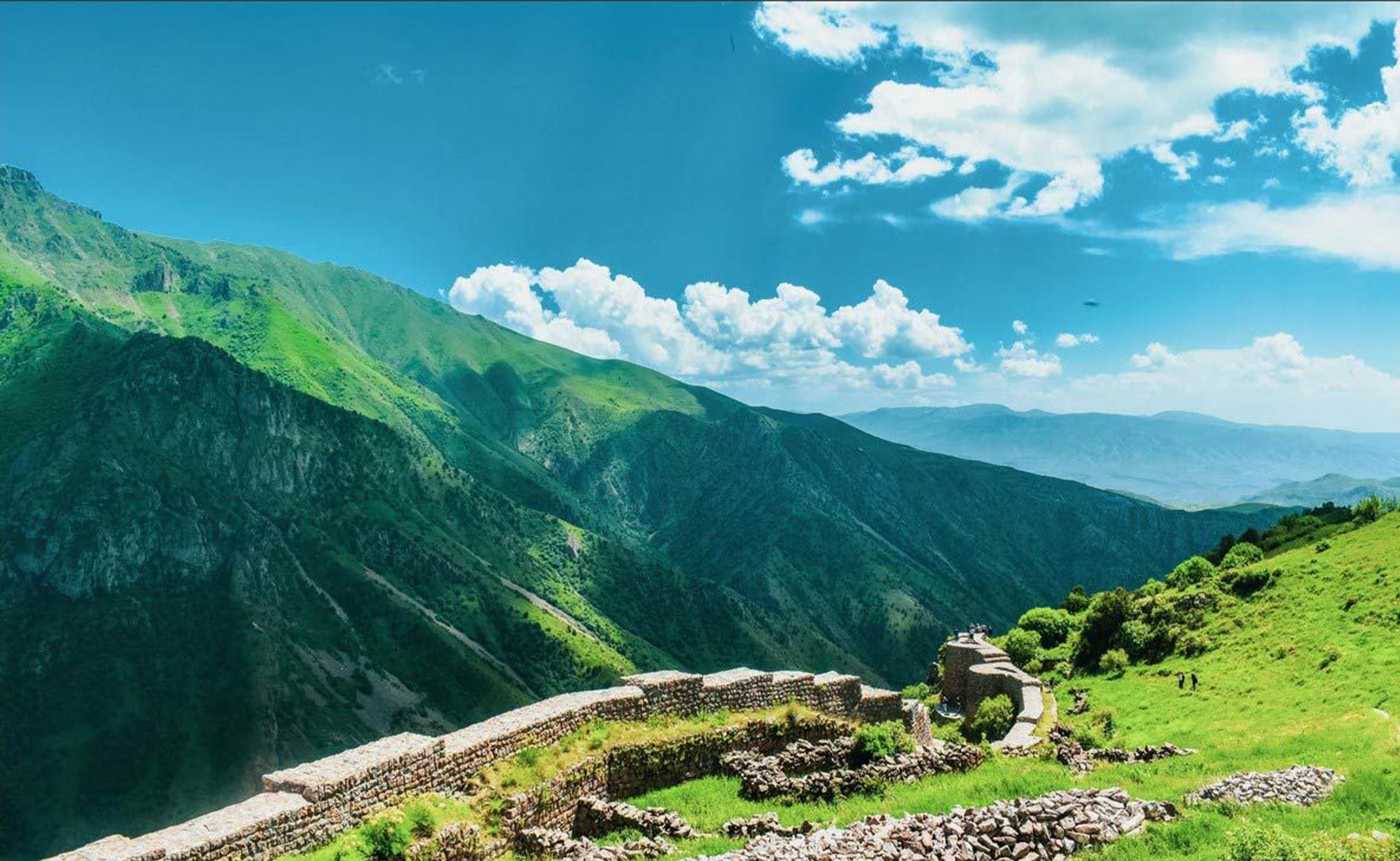
Smbataberd castle lies to the southeast of Artabuink village on top of a narrow mountain top. From here you can also see the village of Yeghegis. On three sides the castle is protected by the ridge. The wall made it impregnable for most of its life, the mountain is approached only on its north end. The fortress’ masonry work and construction technique suggest the castle dates to the 10th-11th centuries, probably built during the reign of the Bagratuni king Smbat II Tiezerakal (“Master of the Universe”), when Armenia built a number of fortified complexes (including monasteries). Smbataberd may be the Symbace mentioned in the ancient Greek geographer Strabo’s account of Atropatene. It reputedly was counted within the possessions of Atropatene (“Atrpatakan” in Greek and Roman sources) – regained by the Roman Empire when Armenia became subject to Rome.
THE WINGS OF TATEV
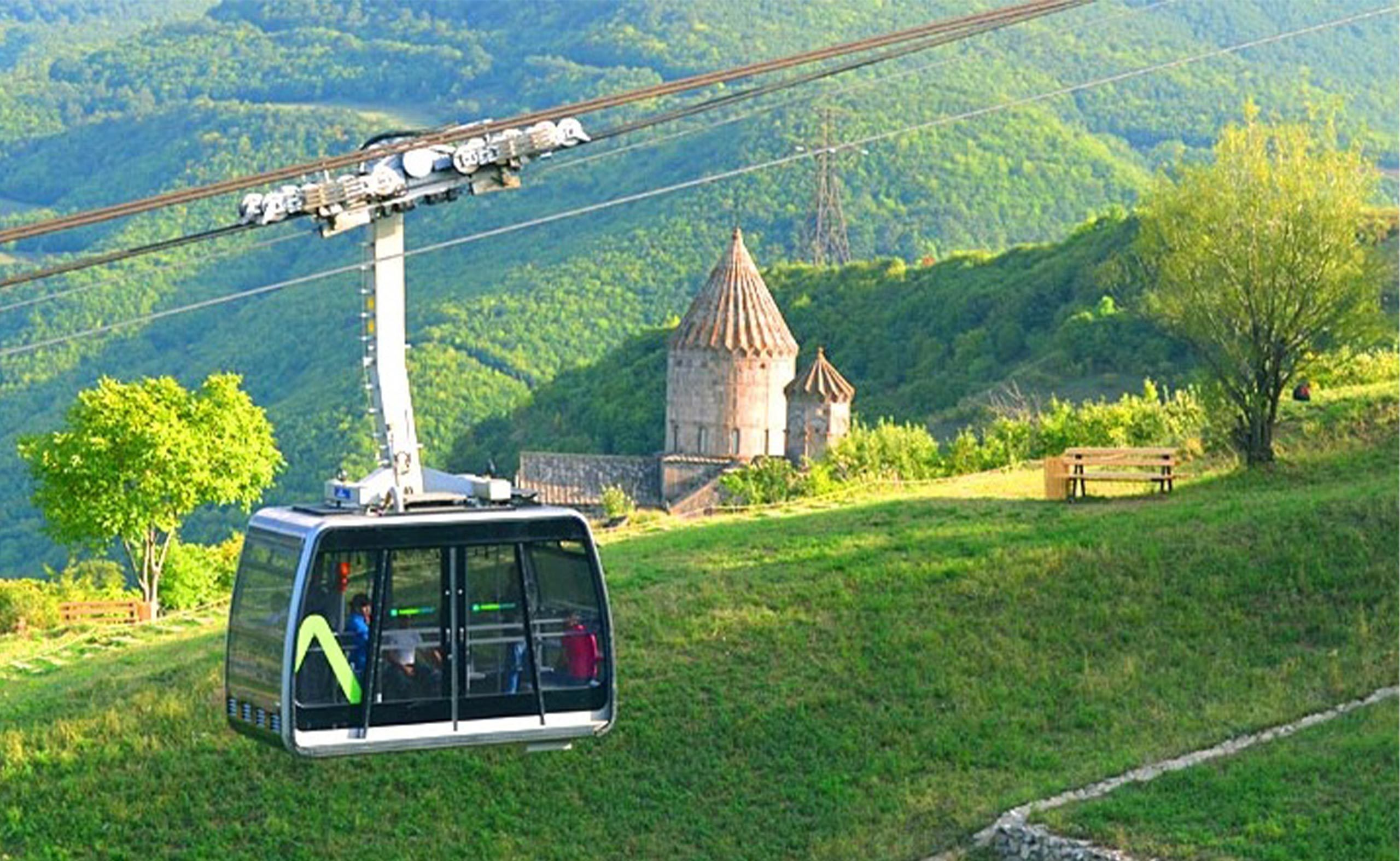
The Tatev cableway, is also known as the Wings if Tatev, is a 5.7 km long cable car connecting the village of Halidzor to the Tatev monastery in southern Armenia. The cable car consists of a single section of 5,750 m, much is higher than the 4,467 m of the one in Sandia Peak Tramway in Albuquerque, New Mexico, the United States. It is therefore the longest aerial cableway in the world. On October 23, 2010 it was officially registered in the Guinness World Records.
SANAHIN BRIDGE
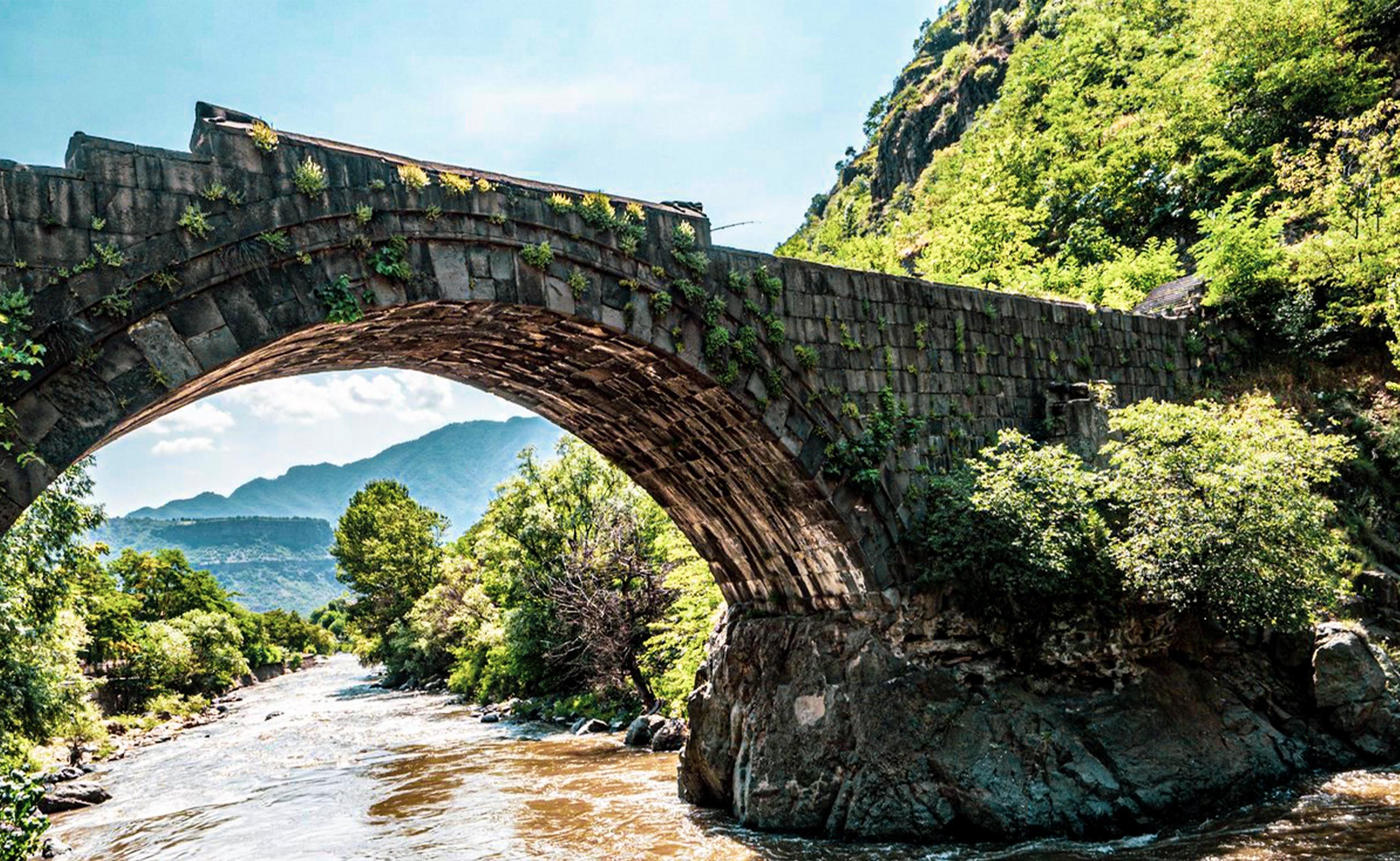
The stone bridge over the Debed River, near Sanahin, is one of the oldest monuments in Armenia. Queen Vaneni built it in 1192. The bridge is considered an architectural masterpiece: placed on a protruding cliff, it has a single arch with a span of 18.6 m.
